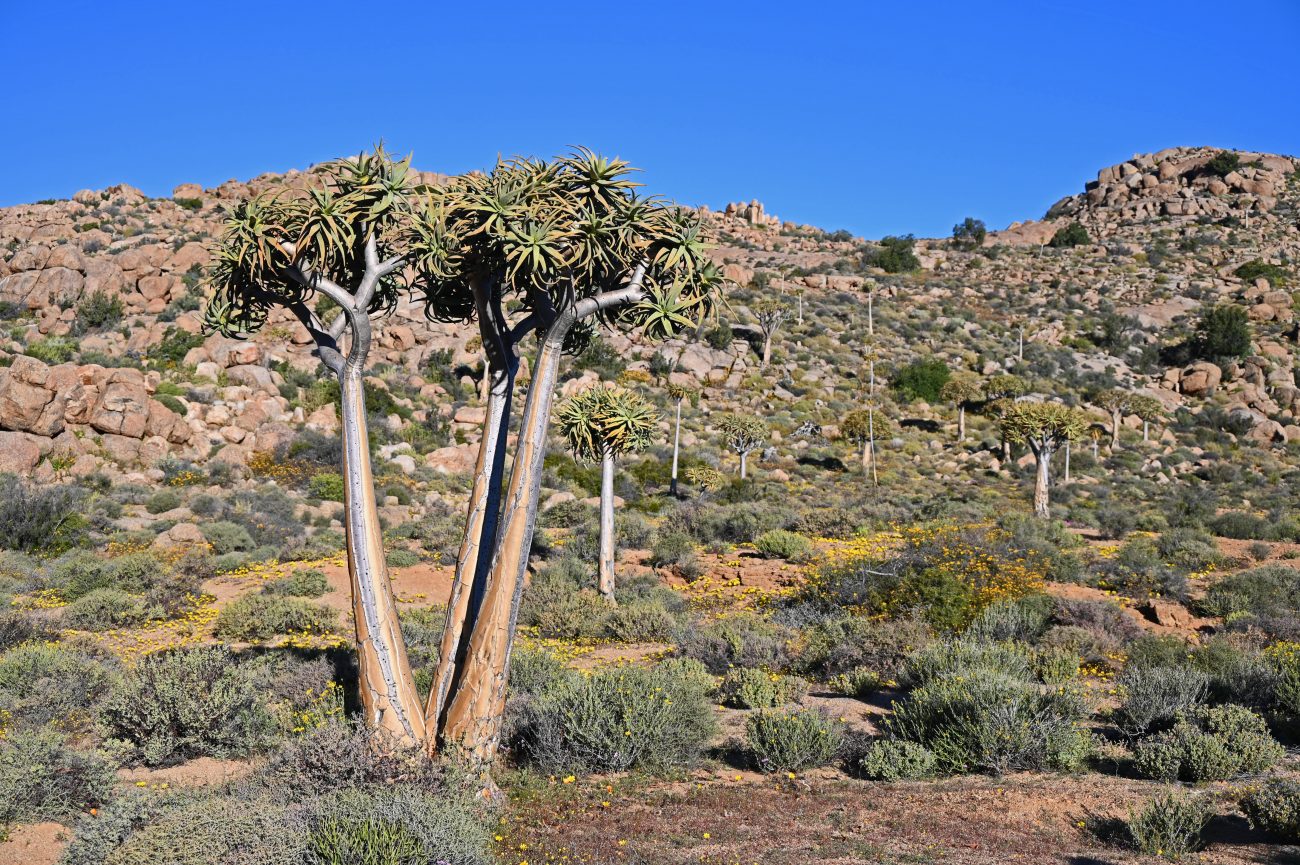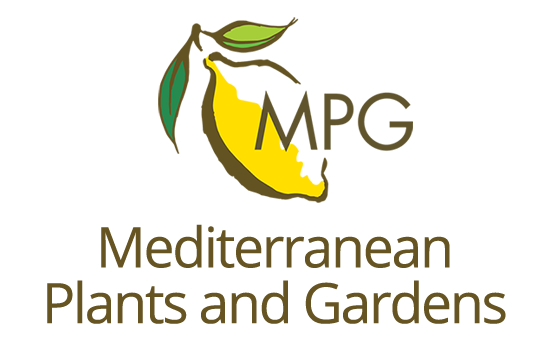Day 5 – Monday 18 August
Springbok
Today we visited the Namaqua National Park. The whole park covers a huge area with varied environments, from the escarpment near Kamieskroon in the east to the coast on the west. The recently added Groen-Spoeg coastal section protects the only significant remaining untouched area of the Namaqualand coast and includes a marine protected area. Namaqualand is home to the richest bulb flora of any arid area in the world and more than 1000 of the estimated 3500 plant species that grow here are found nowhere else.
We visited the Skilpad section to drive and walk around the areas known for their springtime ‘flower carpets’ following the winter rains. Frank said it was a great display this year and we were stunned by the masses of orange annual daises, growing on land that had previously been disturbed.

Namaqua National Park
First, we took a slow drive around the circular Skilpad flower route, stopping regularly to look at specific plants and to visit the ‘Roof of Namaqua’, a great lookout point from high rocks. We then walked part of the Korhaan Trail (named after a bird), which meanders through bushy areas.

Walking through carpets of Ursinia cakilefolia and Dimorphotheca sinuata

Gladiolus equitans

Gazania leiopoda with Gorteria diffusa

Buteo rufofuscus, Jackal buzzard

Monsonia spinosa

Wahlenbergia oxyphylla

Moraea ciliata

Pelargonium incrassatum

Chersina angulata, angulate tortoise
In the afternoon we visited Goegap Nature Reserve, located 15km south east of Springbok. The reserve has temperatures ranging from -2.8°C in July to 39.3°C in January, with annual rainfall between 100-300mm. Most of the reserve lies in the Namaqualand Rocky Hills and receives winter rain but it also borders the Bushmanland Grasveld, which receives summer rainfall. We took the tourist route, an 8 km circular drive through a stunning landscape filled with flowers and encircled by hills.
The reserve is another excellent site to observe annual daisies and Frank advised it was good display here this year too. It is a popular year-round visitor destination for camping, walking, cycling and horse riding and we took advantage of one of the designated picnic huts to enjoy our lunch amongst glorious surroundings.
Most of the plants were low and often succulent, growing in gritty soil. Aloidendron dichotomum, the quiver tree, scaled the rocky hillsides. Exploring around large boulders and in crevices we discovered plants that prefer moist and shady areas, such as Hemimeris racemosa and Oxalis obtusa.

Orange annual Arctotis fastuosa and yellow annual Gazania lichensteinii at Goegap Nature Reserve

Picnic spot

Aloidendron dichomotum

Ornithoglossum vulgare

Cheiridopsis denticulata with yellow closing flowers of Gazania lichtensteinii

Hemimeris racemosa

Oxalis obtusa
The reserve supports 46 mammal species, 96 bird species and 38 reptile species and Brant’s whistling rats scurried into their burrows as we drove around. Heading towards the exit and with sunset approaching, Frank, who is very knowledgeable about reptiles, suddenly stopped the minibus and leapt out to show us a beautiful many horned adder on the track.

Parotomys brantsii, Brant’s whistling rat

Bitis cornuta, many-horned adder

